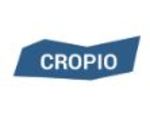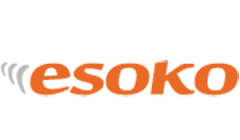Description

Cropio

Krisol - ERP for Agriculture industry
Comprehensive Overview: Cropio vs Krisol - ERP for Agriculture industry
Cropio and Krisol - ERP for Agriculture Industry
a) Primary Functions and Target Markets
Cropio: Cropio is a digital agriculture platform designed to assist crop production management and facilitate data-driven decision-making. Its primary functions include:
- Remote Sensing and Monitoring: Provides tools for monitoring crop health using satellite imagery and other remote sensing technologies.
- Field Mapping: Offers features for creating detailed field maps to understand land use and manage resources effectively.
- Weather Monitoring: Delivers real-time weather data and forecasts to optimize farming schedules and operations.
- Yield Prediction: Utilizes data analytics to forecast crop yields, assisting in planning and logistics.
- Farm Management: Includes farm management software tools to streamline the various operational and management tasks.
Target Market: Cropio primarily targets large-scale farming operations, agricultural enterprises, and agronomists who require advanced data analytics and monitoring capabilities to optimize their agricultural practices.
Krisol - ERP for Agriculture: Krisol is an Enterprise Resource Planning (ERP) solution specifically for the agriculture sector. Its primary functions include:
- Resource Management: Manages resources such as seeds, fertilizers, and labor to ensure efficient utilization.
- Supply Chain Management: Streamlines the supply chain processes from production to distribution.
- Financial Management: Provides tools for managing budgets, expenses, and overall financial health.
- Inventory Management: Tracks and manages inventory levels, orders, sales, and deliveries.
- Compliance and Reporting: Ensures compliance with agricultural regulations and provides comprehensive reporting features.
Target Market: Krisol targets farms of all sizes, agricultural cooperatives, processors, and distributors looking for a comprehensive solution to manage their entire operation from field to market.
b) Market Share and User Base
Determining the precise market share and user base for specific agricultural software like Cropio and Krisol can be challenging as they may not disclose detailed user numbers or market share data publicly. However:
-
Cropio appears to be more focused on precision agriculture, serving a niche segment of large-scale enterprises that benefit heavily from advanced data insights and remote monitoring. They may have a substantial presence in markets where precision agriculture adoption is high, such as in North America, Europe, and some parts of Asia.
-
Krisol, as an ERP, might have a broader user base since ERP systems can appeal to a wide range of operations, including medium to large-scale farms that require integrated solutions for management and operational efficiency. The global appeal of agricultural ERP solutions suggests that Krisol could have a considerable presence in emerging markets where agricultural operations are professionalizing and scaling up.
c) Key Differentiating Factors
-
Technological Emphasis: Cropio emphasizes technological integration with a focus on remote sensing and precision agriculture, aligning with operations looking for high-tech solutions for crop management. It’s designed for users seeking cutting-edge tools for real-time data access and field monitoring.
-
ERP Integration: Krisol, on the other hand, features a comprehensive ERP system that covers the entire agricultural value chain, from production to financial management, making it suitable for users requiring a holistic approach to managing their agricultural operations.
-
Functional Coverage: Cropio’s strength lies in field-level monitoring and agronomy, while Krisol’s strength is in its broad coverage of agricultural operations, including supply chain and financial management.
-
User Focus: Cropio typically serves users looking for solutions tailored to maximize yields and optimize farm management through technological means, whereas Krisol appeals to users focused on operational efficiency, resource management, and integration of business processes.
Both platforms serve the agricultural sector with distinct approaches, and the choice between them will largely depend on the specific needs of the farming operation—whether it’s precision and monitoring versus comprehensive operational management.
Contact Info

Year founded :
Not Available
Not Available
Not Available
Not Available
Not Available

Year founded :
Not Available
Not Available
Not Available
Not Available
Not Available
Feature Similarity Breakdown: Cropio, Krisol - ERP for Agriculture industry
When comparing agricultural management software like Cropio and Krisol - ERP, it's important to consider the core features, user interfaces, and any unique aspects that differentiate the two platforms. Here's a breakdown of their feature similarities and distinctions:
a) Core Features in Common
-
Field Mapping and Monitoring: Both Cropio and Krisol offer satellite-based field mapping and real-time monitoring, allowing users to track crop health and field conditions.
-
Weather Forecasting: These platforms provide weather forecasting tools to help farmers plan their activities around weather conditions.
-
Crop and Soil Health Analysis: Both products include features for analyzing crop and soil health, using data from various sensors and visual imagery to assess the needs of the crops.
-
Work Planning and Management: Users can schedule and manage tasks related to planting, fertilization, and harvesting on both platforms, ensuring efficient resource allocation.
-
Reporting and Analytics: Both Cropio and Krisol offer detailed reporting and analytics features, enabling users to gather insights into farm operations and productivity.
-
Resource Management: Features for managing machinery, labor, and other resources are present in both platforms, aiding in operational efficiency.
b) User Interface Comparison
-
Cropio: Typically, Cropio emphasizes simplicity and ease of use with its intuitive dashboard design, which presents data in a clear, visually engaging way. The focus is on minimal clicks to access various functionalities and spatial data integration that allows easy navigation through maps and reports.
-
Krisol - ERP: Krisol's user interface is generally more detailed and may offer greater customization options, reflecting its broader ERP capabilities. It often prioritizes comprehensive data input and workflow management tools, which might result in a steeper learning curve for new users.
c) Unique Features
-
Cropio:
- Satellite and Drone Integration: Cropio is particularly strong in integrating satellite imagery with drone data for enhanced precision agriculture, providing more frequent and detailed insights into crop conditions.
- AI-Powered Insights: Cropio often utilizes machine learning models to provide predictive insights and automated alerts about potential issues such as pest infestations or disease outbreaks.
-
Krisol - ERP:
- Comprehensive ERP System: Krisol is distinguished by its fully integrated ERP system, which covers not just farm management but also connects business functions such as finance, inventory, and supply chain management.
- Customization and Scalability: Krisol offers more robust customization options and is designed to scale with growing business needs, suitable for larger agricultural enterprises looking to manage complex operations.
These distinctions cater to different user needs: Cropio is often favored for its precision ag features and ease of use, while Krisol is chosen for its holistic ERP capabilities and depth. Ultimately, the choice between Cropio and Krisol would depend on the specific requirements and scale of the agricultural operation.
Features

Farm Management
Data Analytics
Equipment Tracking
Field Monitoring

Reporting & Analytics
Crop Management
Inventory & Supply Chain
Labor Management
Financial Management
Best Fit Use Cases: Cropio, Krisol - ERP for Agriculture industry
Cropio
a) Best Fit Use Cases for Cropio
- Large-Scale Farms and Agribusinesses: Cropio is particularly effective for large-scale agricultural operations that require advanced satellite monitoring and data analytics. These businesses often have vast tracts of land that need continuous monitoring to optimize yield and input use.
- Precision Agriculture Projects: Operations focused on precision agriculture benefit greatly from Cropio's capabilities, such as satellite imagery, field condition monitoring, and predictive analytics.
- Data-Driven Agricultural Research: Entities involved in agricultural research can leverage Cropio for its robust data collection and analysis tools, which provide valuable insights into crop performance and environmental conditions.
- Supply Chain Optimization: Agribusinesses looking to optimize their supply chain from field to market can utilize Cropio’s real-time data insights for improved decision-making and logistics management.
Krisol - ERP for Agriculture Industry
b) Preferred Scenarios for Krisol - ERP for Agriculture Industry
- Integrated Farm Management: Krisol is ideal for farming operations in need of a comprehensive system to manage all aspects of the business, from finance and human resources to supply chain and production.
- Vertical Integration: Agribusinesses that cover multiple aspects of the agricultural supply chain, such as production, processing, and distribution, can benefit from Krisol's capacity to integrate various operations within a single platform.
- Traceability and Compliance Needs: Operations that prioritize traceability and compliance with industry regulations can use Krisol to maintain records and ensure that practices meet required standards.
- Small to Medium Enterprises (SMEs) looking for Automation: Krisol is well-suited for small to medium-sized farms or agribusinesses aiming to automate and streamline their processes without the complexities of larger ERP systems.
Catering to Different Industry Verticals and Company Sizes
-
Industry Verticals: Cropio primarily caters to the precision agriculture vertical, with strong capabilities in monitoring crop health and field conditions. In contrast, Krisol serves a broader range of verticals within agriculture that need comprehensive management solutions, including crop production, livestock management, and agro-processing.
-
Company Sizes: Cropio is typically more suited to larger enterprises or projects with substantial resources geared towards technology adoption and data analytics. Its sophisticated tools are ideal for organizations that already have the infrastructure to support such technology. On the other hand, Krisol is more adaptable to small and medium-sized enterprises that require a more generalist approach to integrating various functions across the business, offering scalability as the business grows.
In conclusion, Cropio excels in environments where precision, large-scale monitoring, and data insights are the focus, whereas Krisol is preferred for its holistic management capabilities, especially for vertically integrated operations and SMEs aiming for streamlined processes.
Pricing

Pricing Not Available

Pricing Not Available
Metrics History
Metrics History
Comparing undefined across companies
Conclusion & Final Verdict: Cropio vs Krisol - ERP for Agriculture industry
Conclusion and Final Verdict: Cropio vs Krisol - ERP for the Agriculture Industry
When comparing Cropio and Krisol for their effectiveness and value in the agriculture industry, it is essential to assess various factors including features, ease of use, scalability, customer support, and cost, among others. By analyzing these elements, one can determine which software provides the best overall value to end-users.
a) Best Overall Value: Considering the range of features and their practical application to the operations in the agricultural sector, Cropio tends to offer better overall value particularly for users who prioritize advanced monitoring and precise farm analytics. Cropio is renowned for its satellite-based monitoring capabilities, which provide real-time insights into crop conditions and farm operations.
b) Pros and Cons:
Cropio:
-
Pros:
- Comprehensive satellite-based monitoring and data analytics.
- Provides real-time data for informed decision-making.
- User-friendly interface with robust visualization tools.
- Strong focus on precision agriculture enhancing yield predictions and resource utilization.
-
Cons:
- May have a steeper learning curve for users unfamiliar with advanced data analytics.
- Higher upfront costs which might not be suitable for small-scale farmers.
- Dependency on reliable internet connectivity for optimal performance.
Krisol - ERP:
-
Pros:
- Integrates various aspects of agriculture operations, from accounting to inventory management.
- Facilitates efficient resource management and operational transparency.
- Offers customization options tailored to specific agricultural processes.
- Generally more affordable, making it accessible for smaller enterprises.
-
Cons:
- Typically requires more time for implementation due to customization needs.
- May lack the robust satellite and precision monitoring features found in Cropio.
- Can be overwhelming for users not needing full-scale ERP functionalities.
c) Specific Recommendations:
-
For Large Farms or Those Focused on Precision Agriculture: Cropio is recommended due to its advanced satellite monitoring and analytics capabilities. It is particularly beneficial for users prioritizing real-time data to inform precision agriculture and maximize outputs.
-
For Small to Medium-Sized Operations or Those Needing Comprehensive Management: Krisol may be a more suitable option due to its comprehensive ERP capabilities that integrate various operational aspects. It's more cost-effective and provides useful tools for managing financials, human resources, and inventory, which are crucial for operational efficiency.
Ultimately, the choice between Cropio and Krisol depends on the specific needs and objectives of the agricultural business. Users should evaluate their operational requirements, budget constraints, and growth goals when making a decision. Additionally, taking advantage of free trials or demos, if available, can provide practical insight into which system aligns best with their needs.
Add to compare



